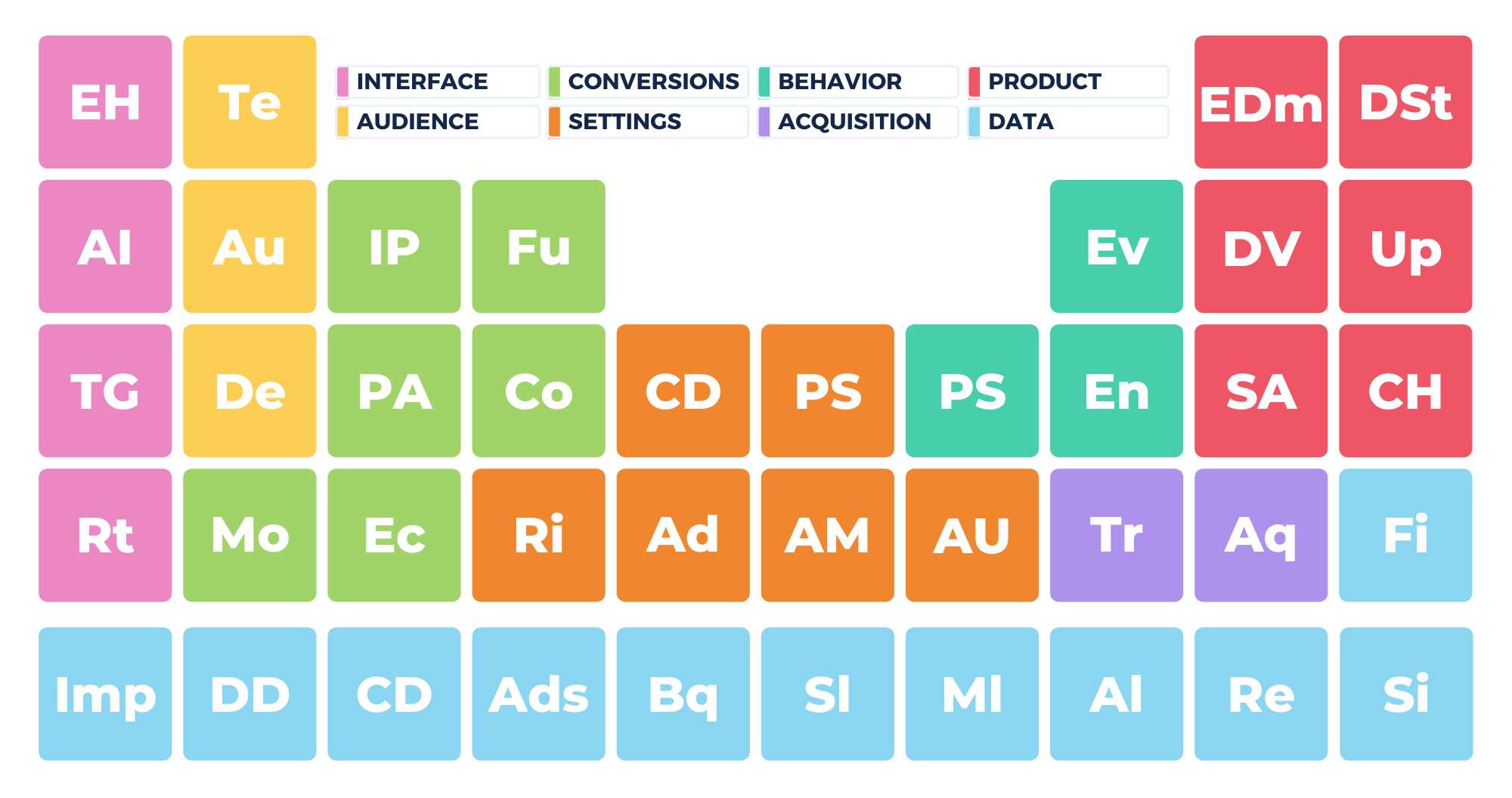
DATA STREAMS
Pull data from your website and apps directly into GA4 with streams

One of the first things you’ll notice about Google Analytics 4 is that the structure is pretty different from Universal Analytics. Where before you had views, you now have data streams, and you probably also have questions.
So what is a data stream in Google Analytics 4? Data streams are sources of information that feed into your Google Analytics property. You can have a data stream for your website, Android app, and iOS app, allowing you to compare and consolidate user behavior across different platforms.
Today we're going to discuss data streams, where they fit in GA4, and how to adjust them to your needs. Keep reading to learn how to get started with data streams and discover the key metrics Google has already set up for you within each one.
What Are Data Streams?
Okay, so let’s get the basics out of the way. Data streams are part of the new GA4 structure. In Universal Analytics, you had a unique property for each source of data—i.e., your website, Android app, and iOS app. You used views and filters to adjust your reports and configure your data collection to your needs.
However, GA4 has done away with views. Now, you have a single Analytics property that contains data streams. These are your data sources, so again, your website, iOS app, and Android app. You can include one or all three of these within a single GA4 property. You can apply filters directly to your report to adjust how you track and view your data from each stream.
Are There Data Streams in Universal Analytics?
No, as we mentioned above, Universal Analytics has a completely different structure from GA4, so you won’t be able to use data streams. The structure of Universal Analytics is Accounts>Properties>Views. You have a single account that contains one or more properties. These properties are made up of an individual source of data like a website or mobile app. You can adjust your reporting by applying view filters to your properties.
In GA4, your structure is Account>Property>Data streams. Now, you have a single property for each data stream (website and mobile apps). You can adjust filters throughout your reporting to view and analyze your data.
For your web stream, you’ll notice a few important notations: stream URL, stream name, measurement ID, and stream ID.

For your mobile apps, you’ll see a platform (iOS or Android), package name, stream ID, and firebase app ID.

Where Do I Find Data Streams?
Setting up and accessing your data streams is quite easy. If it’s your first time setting up your data streams, follow these steps:
1. Go to “Admin” in the bottom left.

2. Go to “Data streams” under “Property.”

3. Select your platform first and then follow the steps to set up a new stream. Click “create stream” once you’re done.

If you’ve already set up your data streams, you can view and change them by following the same steps above and clicking on each individual stream.
Enhanced Measurements in Data Streams
One of the great things about Google Analytics 4 is that it’s simplified in some ways, and you have a few things automatically set up for you.
For web data streams, Analytics has already set up tracking for a few key metrics within each stream’s enhanced measurements. This is great news because Google has pre-selected some key areas, and you don’t have to do anything to get Analytics to start tracking.
For the web data stream you set up in a property, you’ll automatically track page views, scrolls, file downloads, video plays, site search, and outbound link clicks.
- Page views: Tracking page views allows you to see how frequently users are visiting certain pages on your site. This can help you make adjustments to your content and your marketing campaign. This is the only enhanced measurement event that can’t be turned off in the interface.
- Scrolls: Scroll tracking lets you see the scroll depth of users on your pages. This can help you identify underperforming content and see where you’re losing your readers. Unlike the typical scroll tracking in GA3, GA4’s scroll tracking fires once, at the 90% mark.
- File downloads: Tracking your file downloads can help you see what resources your users are interested in. This can help you make marketing and production decisions. Also, if users are frequently downloading a free resource, you might make it a paid download or use it to promote a paid service or product.
- Video plays: Tracking your video plays allows you to see which videos are engaging users on your site. This can help with your content production and deciding which videos to promote on social media.
- Site search: Site search lets you see the search terms people use, where they start their search, and where their search takes them. This information provides insights into navigation and what people are looking for when visiting your website. This can encourage you to produce more of a certain kind of content and can be helpful for your search campaigns as well.
- Outbound link clicks: Your outbound link clicks are important because you can monitor how users move away from your site. You’ll also see which outbound links are getting your visitor’s attention. This can help you make decisions about affiliates and partnerships, social media, and content development. Tracking your outbound link clicks can also help you observe cross-domain traffic. Google Analytics expert Fred Pike also points out that outbound link clicks are simply labeled as “click” in your GA4 events report. Make sure to keep that in mind when reviewing your data.

To make sure everything is properly configured and to make adjustments to your enhanced measurements, follow these steps:
1. Click on “Admin.”

2. Click on “Data Streams” (under “Property”).

3. Click on your Web Stream.

4. Enable the “Enhanced Measurement” feature.

After you’ve checked that you’ve enabled your enhanced measurements, you can use your Debug View to make sure everything is being tracked properly.
Can Data Streams Cross Different Properties?
Data streams have a lot of default advantages. With Universal Analytics, each of your websites and mobile apps had separate properties. However, in GA4, you now collect your data at the stream level, so you can analyze your website and mobile apps within a single property. In this way, your GA4 property acts like a roll-up property, making it a lot easier to track traffic across different sources of data.
However, keep in mind that you can only have one of each kind of data stream (website, iOS app, and Android app) within a single property. So, if you have multiple websites you want to track for your business, you’ll want to set up cross-domain tracking between data streams in separate properties.
To set up your cross-domain tracking between GA4 properties, follow these steps:
Note: You will need to have edit access to both properties to set up cross-domain tracking.
1. Go to your first GA4 property and click on “Admin.”

2. Click on “Data streams.”

3. Select the first data stream you want to set up for cross-domain tracking.

4. Under “Additional settings,” click on “More tagging settings.”

5. Click “Configure your domains.”

6. Click “Add condition.”
7. Click on the settings that meet your needs. (Use caution when selecting. There’s a big difference between “Contains” and “Begins with.”)
8. Add the domain you want to include in cross-domain tracking.
9. Click “Save.”
10. Go back and select the other property that contains the data stream you want to include in cross-domain tracking.
11. Again, click “More tagging settings” under “Additional settings.”
12. Again, click “Configure your domains.”
13. Click “Add condition.”
14. Again, select your parameter from the drop-down list.
15. Enter the website you previously set up for cross-domain tracking.
16. Click “Save.”
And that’s all there is to it!
Data Streams in GA4
GA4 comes with a lot of changes, and it’ll take some time to get your bearings. One of the first things you should do is familiarize yourself with the new Google Analytics hierarchy. You no longer have views as you did with Universal Analytics. Instead, you now have data streams that you can configure to adjust your reports in your GA4 property.
Luckily, GA4 has made some things easy, and one of the biggest perks of data streams is that they’re automatically configured to track some important metrics, including page views, scrolls, outbound link clicks, video plays, site search, and file downloads.
How are you adjusting to data streams in GA4?
Let us know!

